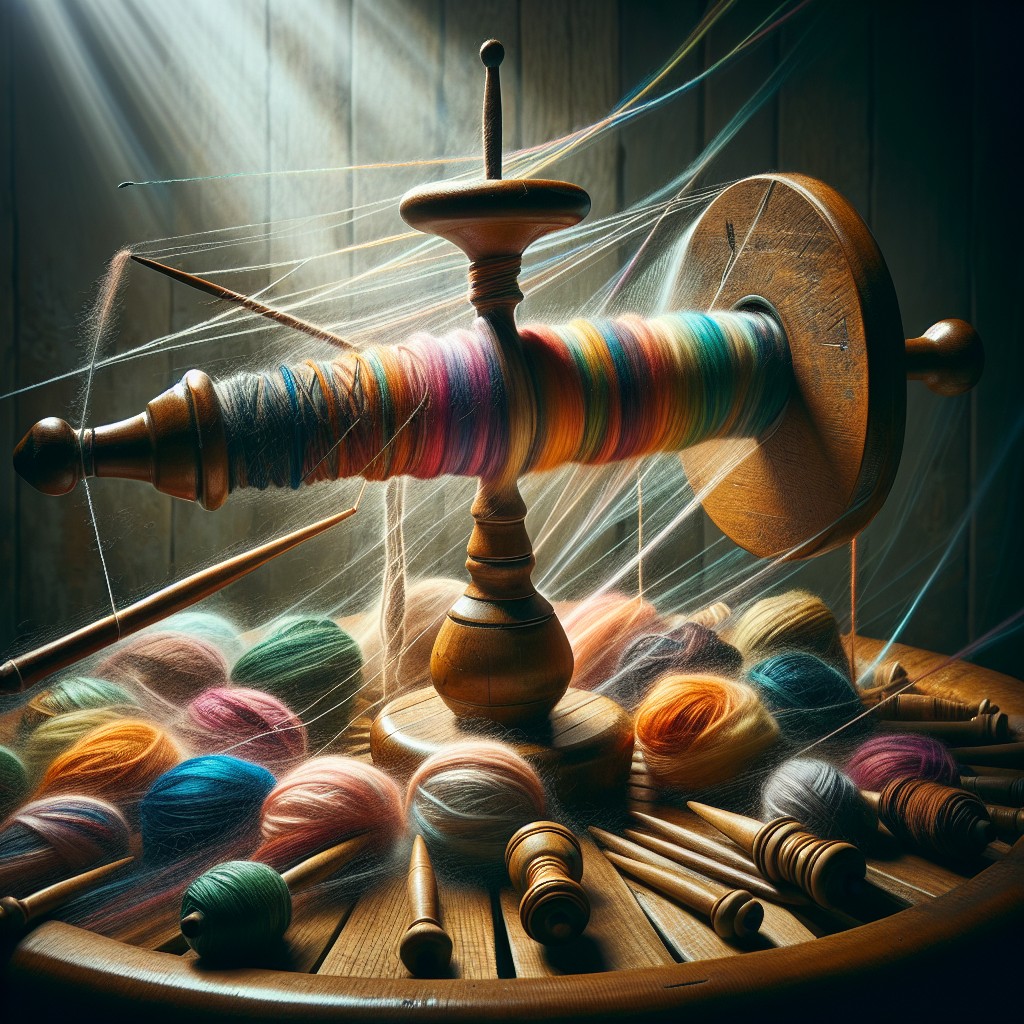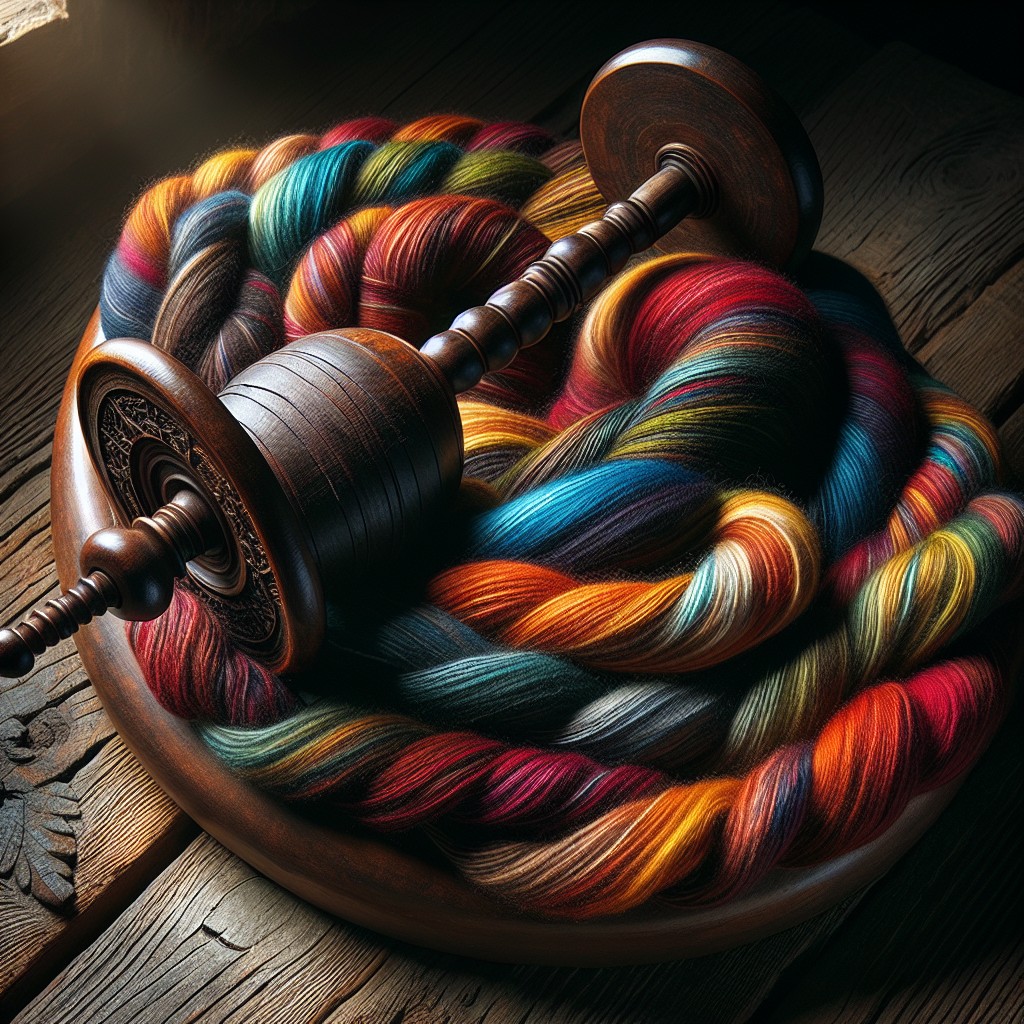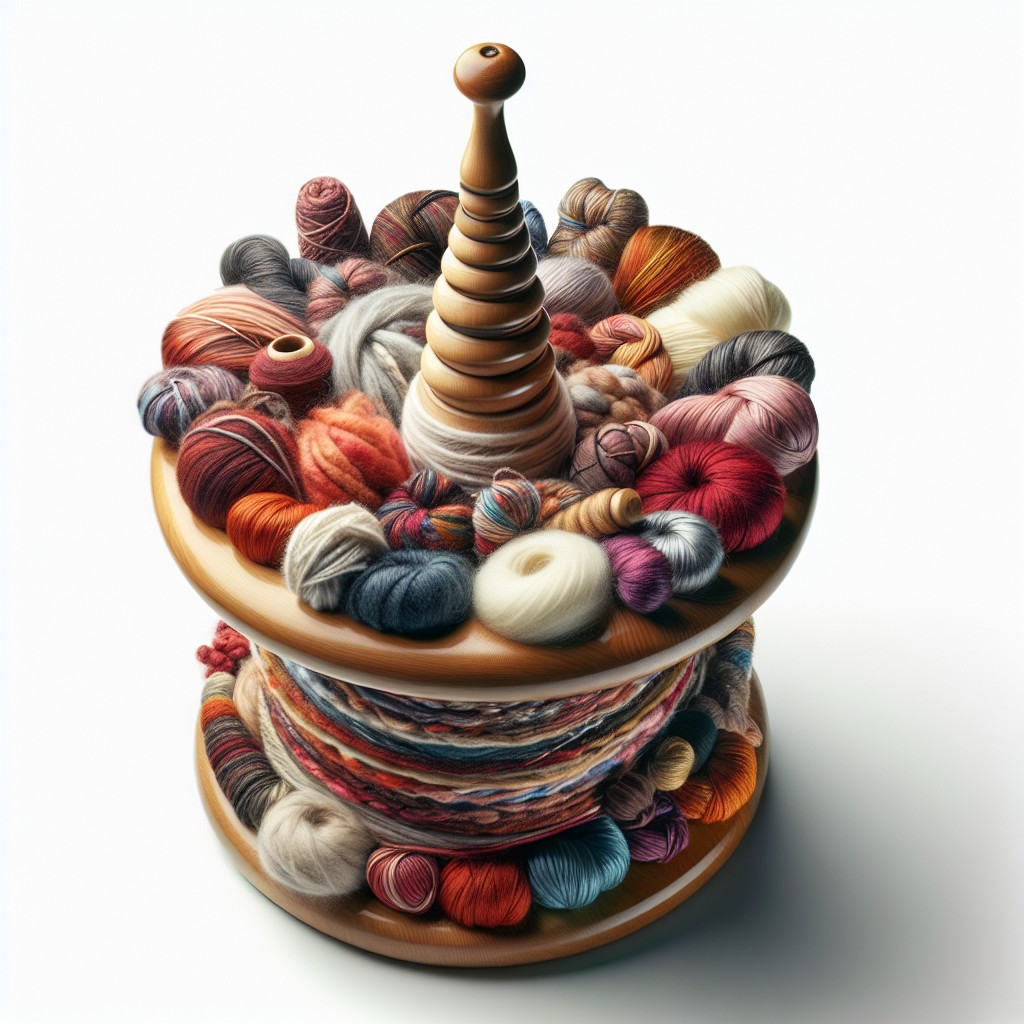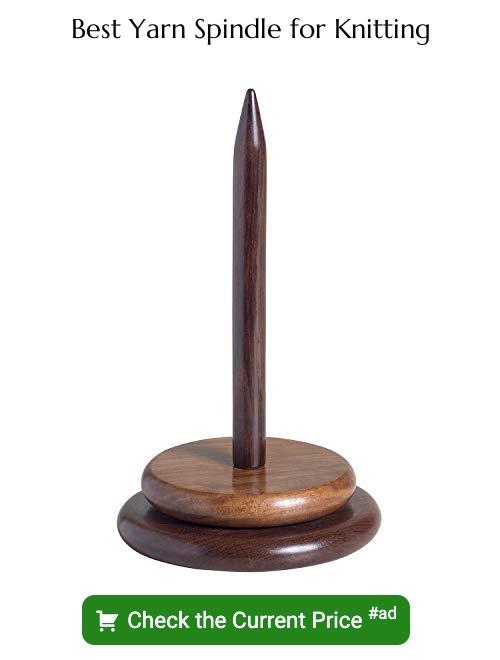Discover the fascinating world of yarn spindles, as we delve into their diverse types and how they revolutionize the art of spinning fibers.
Are you a yarn enthusiast who loves to spin your own yarn? If so, you know that choosing the right spindle is crucial for creating quality yarn. With so many types of spindles available, it can be overwhelming to decide which one is best for your project.
That’s why we’ve put together this guide on the different types of yarn spindles and their unique qualities. Whether you’re a beginner or an experienced spinner, keep reading to learn more about which spindle will help you create the perfect yarn for your next project!
Supported Spindles

Supported spindles are a great option for beginners who are just starting to learn how to spin yarn. As the name suggests, these spindles require some form of support while spinning.
This can be achieved by placing the spindle on a surface or using your thigh as support.
One of the benefits of supported spindles is that they allow you to focus solely on drafting and controlling fiber tension without worrying about balancing the spindle. They also tend to have longer shafts than other types of spindles, which means they can hold more yarn before needing to be wound off.
There are different types of supported spindles available, including Tibetan and Russian styles. Tibetan-style supported spindles typically have a long shaft with a weighted whorl at one end and an elongated tip at the other end for resting against your leg or another surface while spinning.
Russian-style supported spindles usually feature two separate pieces: A small bowl-shaped base that sits on top of another larger bowl-shaped base with an elongated tip protruding from it where you rest your fiber bundle during spinning.
Drop Spindles

They’re easy to use, portable, and versatile. Drop spindles consist of a spindle shaft with a whorl at the top that spins freely on it.
The spinner holds onto the shaft while spinning fibers into yarn by letting gravity pull down on the spindle.
There are two main types of drop spindles: top-whorl and bottom-whorl. Top-whorl drop spindles have their whorls at the top end of their shafts while bottom-whirl ones have theirs located near their base.
Top-Whirl Drop Spindle The weight distribution in this type is such that more weight is concentrated above your hand than below it when you spin which makes them ideal for beginners as they require less effort to get started. Bottom-Whirl Drop Spindle These tend to be heavier than other kinds because all its mass is concentrated towards its lower end making them great for experienced spinners who want more control over finer threads or laceweight yarns.
Low-Whorl Spindles

They have the whorl (the circular part of the spindle) located near the bottom, which makes them ideal for beginners who are still learning how to control their spinning. Low-whorl spindles come in various sizes and weights, making it easy to find one that suits your needs.
One advantage of low-whorl spindles is that they can be used with a variety of fibers, including wool, silk, cotton or even synthetic blends. This means you can experiment with different materials until you find what works best for your project.
Another benefit is that low-whorls tend to spin at a slower speed than high-whorls because gravity helps pull down on the fiber as it twists around the spindle shaft. This slower pace allows for more control over tension and drafting while spinning.
High-Whorl Spindles

As the name suggests, these spindles have their whorls located at the top of the shaft. This design allows for a longer spinning time and faster rotation, making it easier to create finer yarns.
One advantage of high-whorl spindles is that they allow you to control your drafting more easily than other types of spindles. The weight distribution also makes them ideal for creating thinner and smoother yarns with less effort.
However, high-whorl spindles require a bit more skill to use effectively compared to low-whorl or drop spindles because they need constant attention from the spinner’s hand while in use. They can be challenging for beginners but are an excellent choice once you’ve gained some experience with spinning fibers.
Convertible Spindles

These spindles can be used as either a top or bottom whorl spindle, depending on your preference and spinning needs. Convertible spindles come in various sizes and weights, making them suitable for different types of fibers and yarns.
One advantage of convertible spindles is that they allow you to experiment with different spinning techniques without having to invest in multiple types of spindles. They also offer flexibility when it comes to adjusting the weight distribution, which can affect how quickly your fiber spins.
If you’re new to spinning or unsure about which type of spindle is right for you, a convertible spindle may be an excellent place to start. It allows you the freedom to try out both top-whorl and bottom-whorl styles before committing fully.
What Do You Want to Spin?
Different fibers require different types of spindles for optimal results. For example, if you’re spinning a fine wool or silk fiber, a high-whorl spindle may be your best bet as it allows for more twist control and finer yarns.
On the other hand, if you’re working with heavier fibers like cotton or hemp, a low-whorl spindle may be better suited as it can handle thicker yarns with ease.
It’s also important to consider whether you want to spin single-ply or multi-ply yarns. Single-ply yarn requires less twist and can be spun on any type of spindle while multi-ply requires more twist and benefits from using supported spindles that allow for greater control over tension.
How Much Experience Do You Have?
If you’re new to spinning, you may want to start with a supported spindle or low-whorl spindle as they are easier to control and require less skill. On the other hand, if you have some experience under your belt and are looking for more versatility in your spinning techniques, high-whorl spindles or convertible spindles might be better suited for you.
It’s important not only to consider how much experience you have but also what kind of spinner you are. Some spinners prefer slow and steady methods while others like fast-paced techniques that produce bulkier yarns quickly.
Knowing yourself as a spinner will help guide which type of yarn spindle is best suited for your needs.
What Kind of Spinner Are You?
Are you a slow and steady spinner who enjoys taking your time with each fiber? Or do you prefer a faster pace and want to produce as much yarn as possible in one sitting? Knowing your spinning style can help determine which type of spindle will work best for you.
If you’re someone who likes to spin quickly, then a high-whorl spindle might be the way to go. These spindles have their whorls at the top, allowing for faster spinning speeds.
On the other hand, if precision is more important than speed for your projects, then low-whorl spindles may be better suited for your needs.
Ultimately, understanding what kind of spinner you are can help narrow down which types of spindles will work best with both your skill level and personal preferences.
Where Do You Want to Spin?
Are you planning on spinning at home or on-the-go? If portability is a priority for you, then a lightweight and compact spindle would be ideal. Drop spindles are great for traveling as they can easily fit in your bag and don’t require much space.
On the other hand, if you prefer spinning at home or have limited mobility, then supported spindles may be more suitable as they allow for longer periods of uninterrupted spinning without having to hold them up.
Some types of spindles work better with certain fibers than others. For example, high-whorl spindles are great for fine fibers like silk while low-whorl spindles work well with coarser fibers like wool.
Ultimately, where and what type of fiber you plan on using will play a significant role in determining which spindle is best suited for your needs.
Final Words
Whether you prefer supported spindles or high-whorl spindles, it’s important to experiment with different types until you find the one that works best for you. Remember to consider factors such as what fibers you want to spin, how much experience you have, and where you plan on spinning before making your final decision.
Ultimately, no matter which type of spindle suits your fancy – drop spindle or low-whorl spindle – there are endless possibilities when it comes to creating beautiful yarns from scratch. So go ahead and explore this fascinating world of fiber arts! With practice and patience (and perhaps a little bit of trial-and-error), anyone can become an expert spinner in no time at all!
FAQ
What are the different types of drop spindles?
Answer: The two types of drop spindles are suspended and supported.
What is the difference between a spindle and a drop spindle?
The difference between a spindle and a drop spindle is that a drop spindle relocates the shaft to a higher position (typically 2 to 3 inches) than the original, resulting in a lower ride height, whereas a regular spindle maintains the stock ride-height.
What is the difference between top and bottom drop spindles?
The difference between top and bottom drop spindles is that top whorl spindles are used for finer yarns, while bottom whorl spindles are used for heavier yarns due to the difficulty of maintaining even spinning with a heavy whorl placed at the top.
What are spindles in yarn?
Spindles in yarn refer to straight spikes, typically made of wood, that are used for spinning and twisting fibers like wool, flax, hemp, and cotton into yarn.
How do the various types of drop spindles affect the yarn spinning process?
Different types of drop spindles impact the yarn spinning process by varying factors such as weight, whorl placement, and design, which can influence the type, thickness, and consistency of the spun yarn.
What materials are commonly used to make drop spindles and how do they impact yarn quality?
Drop spindles are commonly made from materials such as wood, metal, and plastic, which can impact yarn quality with wood providing good grip and balance, while metal offers durability and plastic is light and affordable.
What are some recommended techniques for beginners who want to start spinning yarn using a drop spindle?
One recommended technique for beginners starting to spin yarn using a drop spindle is to practice drafting fibers, maintaining proper tension, and mastering the spinning motion to create consistent yarn thickness.





